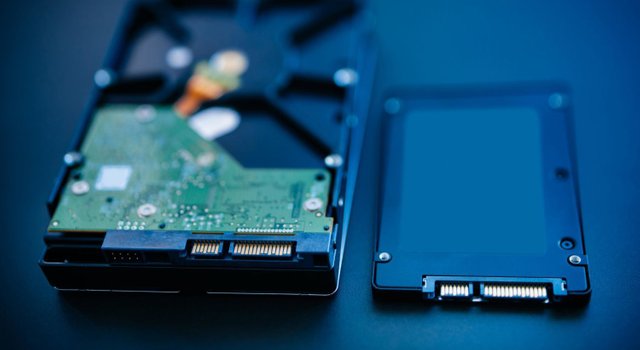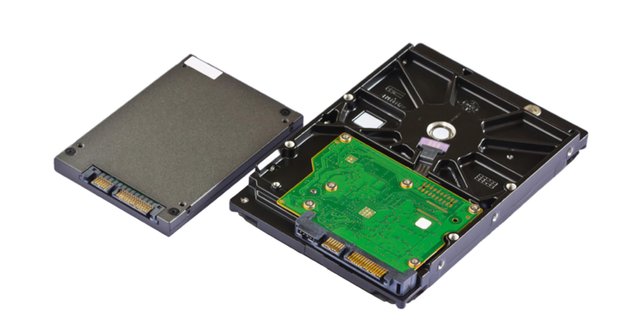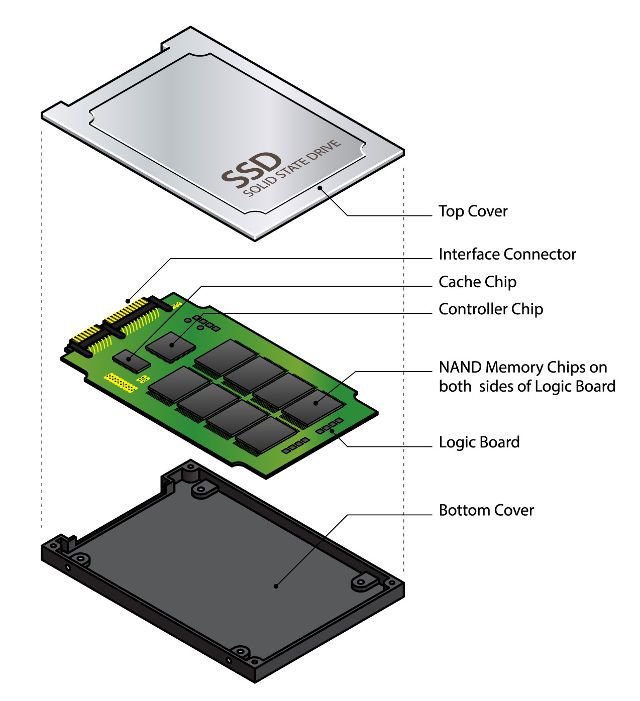Every single hard beyond words. It's an unavoidable truth, and it's ordinary to buy another one like clockwork, either to supplant an old hard drive or to use as an extra reinforcement drive. Be that as it may, with such a significant number of decisions out there, which hard drive would it be a good idea for you to purchase?
The uplifting news is, hard drive shopping isn't too troublesome. Truth be told, there's a considerable measure of adaptability and space! For whatever length of time that you pursue these rules, you won't need to stress over purchasing the wrong hard push and discarding your cash.
1. Hard Disk Drive vs. Solid State Drive
Without a doubt the principal choice to make when purchasing an information stockpiling drive is whether you need a strong state drive (SSD). While a SSD serves indistinguishable capacity from a conventional hard plate drive (HDD), it accompanies a couple of upsides and downsides.
A SSD is a kind of information drive that utilizations streak memory rather than the turning metal circles found in customary HDDs. Consider it like an enormous USB drive or SD card. In any case, how essential is that qualification, in any case?

All things considered, there are benefits. In the first place, SSDs read and compose information quicker. Second, SSDs draw less power which saves vitality and broadens PC battery life. Third, SSDs have no moving parts so they make no clamor and have longer life expectancies.
Be that as it may, there are a few drawbacks as well. SSDs are more costly per gigabyte, which means they have little information limits than HDDs at a given value point.
On the off chance that cash is a major concern, run with a conventional HDD. In case you're purchasing the drive for the most part for long-haul information reinforcement stockpiling, run with a customary HDD. On the off chance that the drive will run a working framework or hold a great deal of regularly got to documents and projects, at that point run with a SSD.
Searching for proposals? You can't turn out badly with the WD Blue 1TB HDD or the Samsung 860 EVO 500GB SSD. Both are to a great degree strong picks for most utilize cases.
2. Hard Drive Sizes and Interfaces
Once you've chosen HDD and SSD, you need to pick a frame factor. Gratefully, there are just two decisions and the correct decision is for the most part directed by your present setup.
Information drives come in two frame factors: the 3.5-inch drive and the 2.5-inch drive.
In customary HDDs, information is put away on turning metal plates, which implies that more circles are required for extended information limit. Consequently, work area HDDs have a tendency to be 3.5-crawls with a general most extreme limit of 12TB while workstation HDDs have a tendency to be 2.5-creeps with a general greatest limit of 4TB.

Then again, SSDs can be made littler in light of the fact that they don't require portable parts. Accordingly, most SSDs come in the 2.5-inch frame factor. Imagine a scenario in which you have to fit a SSD into a 3.5-inch connector. Connectors are accessible.
To the extent associations go, most current shopper drives (both HDD and SSD) utilize SATA connectors. More seasoned HDDs that were made before the SATA standard undoubtedly utilize IDE connectors. Furthermore, in case you're purchasing an outside drive, it will interface with your framework through a USB port.
3. Hard Drive Specifications and Performance
Since you comprehend what sort of drive to get, it's an ideal opportunity to locate the best one that meets your requirements. This is what you have to consider
Capacity limit. HDDs come in all sizes, topping out at 16TB for every drive because of physical impediments. Then again, SSDs are considerably littler and have come to as high as 60TB—yet moderate customer level SSDs are once in a while bigger than 4TB.
Exchange speeds. The execution of a customer level HDD is dictated by numerous variables, yet cycles every moment (RPMs) is an essential one. Higher RPMs implies quicker exchanging of information to and from the drive.
You can overlook the drive's SATA speed. For instance, a cutting edge drive may be recorded as 3.0GB/s and 7200RPM. That first esteem is the SATA speed, which depicts the hypothetical greatest speed of a SATA association. No HDD can exchange information at that sort of speed. Nonetheless, a 7200RPM drive will dependably be quicker than a 5400RPM drive.
Store space. At the point when a hard plate needs to exchange information starting with one segment of the drive then onto the next, it uses an exceptional region of inserted memory called the store or cradle.
A bigger reserve empowers the information to exchange quicker in light of the fact that more data can be put away at one time. Current HDDs can have reserve sizes extending from 8MB to 256MB.
Access times. Conventional HDDs have two or three different components that effect execution, for example, the time it takes for the peruser to position itself to peruse information from or compose information to the drive.
While the facts confirm that two 7200RPM drives could perform in an unexpected way (e.g. one of them may be slower at re-situating the peruser), there's no standard method to look at access times. Also, most hard drives perform at comparative levels nowadays, so don't stress excessively over this specific detail.

For SSDs, you'll need to search for successive read and compose speeds (likewise called maintained read and compose speeds). For whatever length of time that those paces are inside the SATA connector's maximum speed, which they in all likelihood will be, you ought to be fine.
Disappointment rate. Since HDDs are mechanical, wear and tear is normal after some time, yet not all HDDs wear at a similar rate. A few models are inclined to flop inside a year while others have normal life expectancies surpassing six years. It's your duty to inquire about this on a for every model premise preceding making a buy.
Overall, as indicated by StorageReview, current SDDs tend to last more (normal disappointment rate of 2.0 million hours) than present day HDDs (normal disappointment rate of 1.5 million hours). In any case, for long haul stockpiling of information that stays detached for a considerable length of time or years, HDDs are much more strong than SSDs.
4. Price and Cost of Hard Drives
When shopping, you'll keep running into an extensive variety of hard drive costs for gadgets that all look fundamentally the same as at first glance. It's dependent upon you to choose which factors and highlights are most significant to your requirements, at that point select a hard drive that fits those necessities.
So, one approach to decide an incentive for cash is to separate the drive's cost by its stockpiling ability to get its cost per-gigabyte.
For instance, consider the WD Black arrangement of HDDs.
The WD Black 1TB HDD is an overall decent buy for ordinary customers. Knocking up capacity ability to the WD Black 2TB HDD almost pairs the cost. Knocking up limit again for the WD Black 4TB HDD costs you a lot more, yet not exactly twofold. The pattern remains constant for the WD Black 6TB HDD.
Which one of these offers the best esteem? The 6TB model. The 1TB, 2TB, 4TB, and 6TB models have cost for every gigabyte esteems that abatement with bigger storage room. There are different drives that don't scale in cost, however. So you must be cautious. A few drives cost more for each gigabyte at higher limits.
5. External Hard Drives vs. Internal Hard Drives
The last interesting point is whether this hard drive is going to housed in a work area or workstation case or utilized remotely and associated with different gadgets. It's a simple choice, yet how about we investigate the upsides and downsides of each.
Outer drives are perfect for capacity, reinforcements, and exchanges. They normally interface utilizing USB 2.0, 3.0, or 3.1, which have most extreme exchange rates of 60MB/s, 625MB/s, and 1,250MB/s, individually. USB 3.1 is best obviously, however not fundamental except if you're exchanging long periods of information forward and backward each and every day.
Outside drives are convenient. They can be shared between numerous PCs with no problem. Simply unplug the USB, plug it somewhere else, and you're finished. They can likewise be connected to TVs and media places for direct media playback.
In every other case, inward drives are best.
Note: Any information drive can be utilized inside or remotely—outer drives are basically interior drives set in an uncommon defensive packaging. On the off chance that you purchase an outer drive, you can really evacuate the drive and utilize it inside.
We like HDDs for outer drives since you once in a while require the execution of a SSD when utilized remotely, and HDDs tend to hold up better after some time. Ensure you get one with USB 3.0 or 3.1 help, similar to the moderate Seagate Expansion 4TB Portable HDD.
6. Gaming Hard Drives: PlayStation, Xbox, PC
Your hard drive decision can essentially affect the execution of amusements, or, in other words dependably suggest SSDs for gaming. This is valid for PCs, Xbox One, Xbox One X, PlayStation 3, PlayStation 4, PlayStation 4 Slim, PlayStation 4 Pro, or any more current gaming console.
Since SSD speeds far surpass HDD speeds, amusements will dispatch considerably quicker and stack substantially quicker between levels, stages, and maps. Truly, the contrast among SSDs and HDDs for gaming is night and day. You'll lament getting a HDD!
While picking a drive, you need to adhere to the parameters of the gadget
- For PCs: Any hard drive will function as long as you probably are aware the frame factor of the hard drive inlets for your situation and the association composes on your motherboard. Once more, it's no doubt 3.5-inch for work areas and 2.5-inch for workstations and in all probability SATA associations.
- For Xbox 360: The first Xbox 360 utilizations 2.5-inch hard drives set inside custom cases. To redesign or supplant, you'll have to get one of Microsoft's overrated substitutions. Outsider drives can be utilized yet should be connected with Xbox-perfect firmware, or, in other words the extent of this article.
- For Xbox 360 S and E: The hard drives utilized in Xbox 360 S and E comforts are contrary with the first Xbox 360, and the other way around. The 4GB models have inner blaze memory that can't be evacuated or supplanted. The 250GB models can be moved up to 500GB by acquiring one of Microsoft's overrated substitutions.
- For Xbox One: The Xbox One backings outside drives through USB 3.0, which implies you can utilize practically any SSD. Tragically, there's no simple method to supplant the inside drive. Take in more in our article on exploiting Xbox One outside drives.
- For Xbox One X: The Xbox One X likewise underpins outside drives through USB 3.0 with a base size of 256GB. Shockingly, there's no simple method to supplant the inside drive, and doing as such will void your guarantee.
- For PlayStation 3: All PlayStation 3 models have 2.5-inch SATA drives that can be supplanted and updated by clients without problem.
- For PlayStation 4: All PlayStation 4 models, including Slim and Pro, have 2.5-inch SATA drives that can be supplanted and updated by clients without issue. They additionally bolster outer hard drives through USB 3.0.
7. Internal and External Hard Drives for Mac
In case you're on a MacBook Air, MacBook Pro, Mac Mini, or iMac, at that point there are a bunch of additional contemplations you should remember when purchasing a hard drive.
The most essential thing is that Mac hard drive redesigns are practically DIY ventures. You need to shred your gadget just to achieve the inward drive, precisely supplant it, and after that set up everything back together. Indeed, even the most effortless substitution can take something like 60 minutes.
All MacBook Air, MacBook Pro, Mac Mini, and iMac models 2012 and later utilize an inside 2.5-inch frame factor (aside from 27-inch iMacs, which utilize an inner 3.5-inch shape factor). Luckily, 3.5-to-2.5-inch connectors do exist.
Things get somewhat dim similar to SATA, PCIe, NVMe, and AHCI are concerned. For instance, 21.5-inch iMacs in 2017 just have a PCIe space if the gadget was at first fitted with a Fusion Drive. You won't know which associations are accessible in your correct gadget except if you particularly find it.
External Hard Drives for Mac
For outside drives, you have a few association alternatives, recorded arranged by expanding information exchange speeds: USB 2.0, USB 3.0, USB 3.1, Thunderbolt 2, and Thunderbolt 3 (otherwise called USB Type-C). We suggest USB 3.0 as indisputably the most minimal you ought to go.
Macintosh gadgets utilize Apple's remarkable document frameworks, so outer hard drives should be arranged in either HFS+ (Mac OS Extended) or Apple File System (APFS) for greatest execution.
Yet, take note of that most non-Apple gadgets won't have the capacity to peruse HFS+ or APFS drives! There are approaches to peruse HFS+ on Windows, however APFS is new to the point that similarity is seriously constrained. The main arrangement that neatly works with both Mac and Windows is FAT32
Tips for Hard Drive Care and Maintenance
Do you have any extra hard drives lying around? Try not to discard them! Here are some slick approaches to inhale new life into old hard drives. Wring some more incentive out of them!
Presently you know everything to think about purchasing another hard drive. Once acquired, make sure to deal with your hard drive legitimately with the end goal to expand its life expectancy and keep it clean.